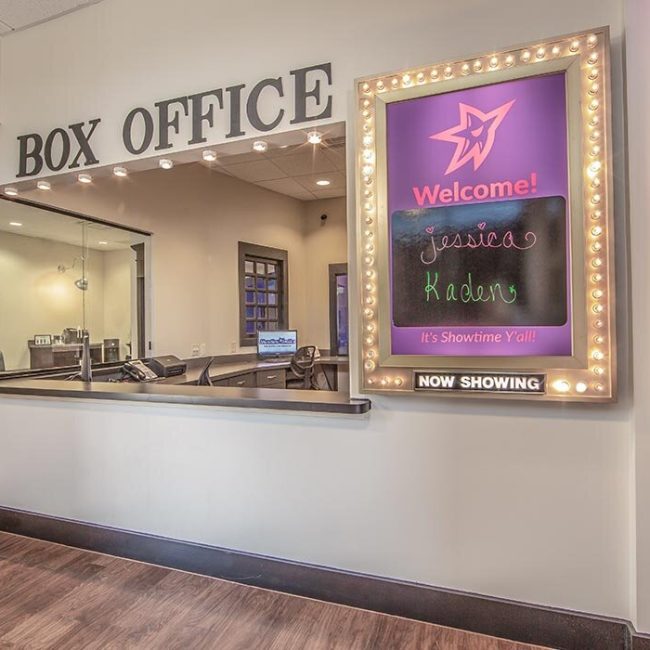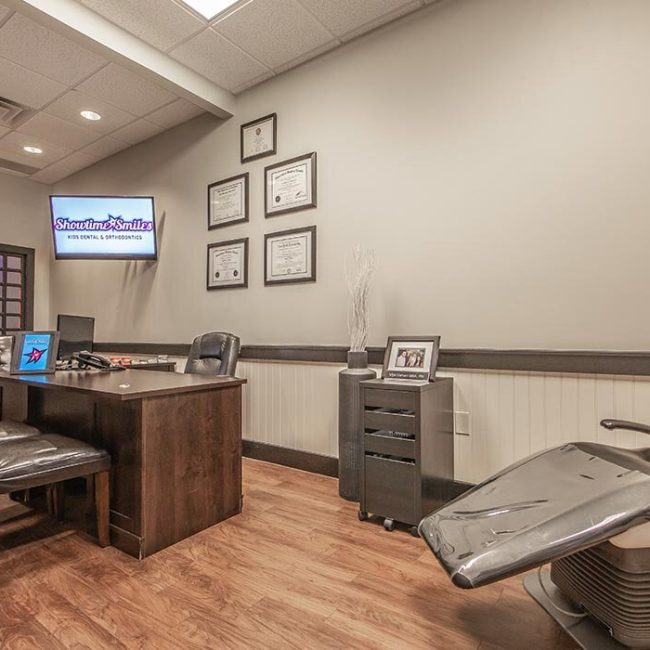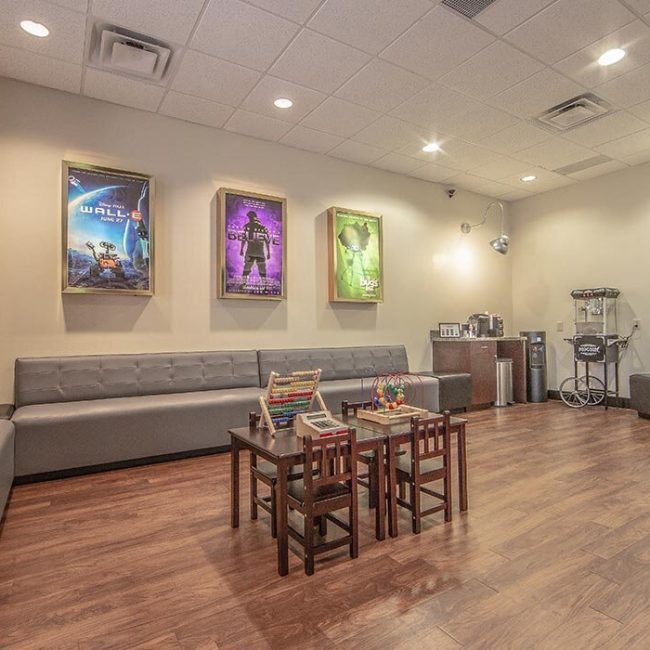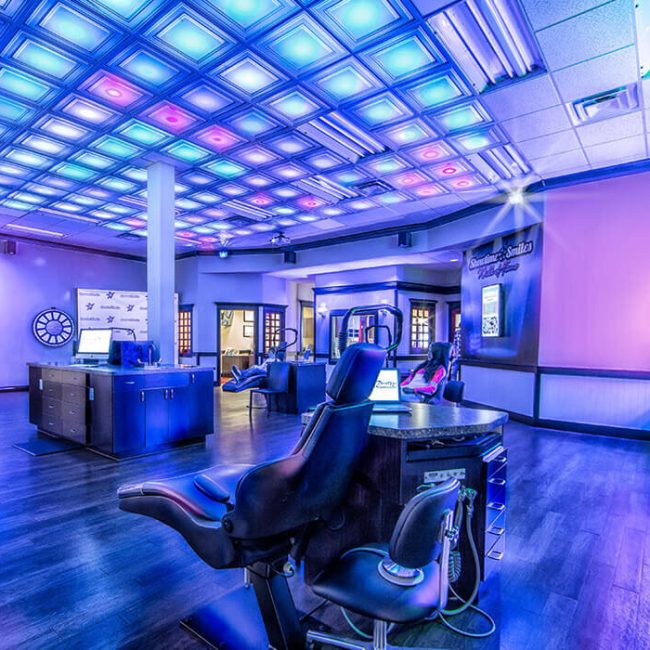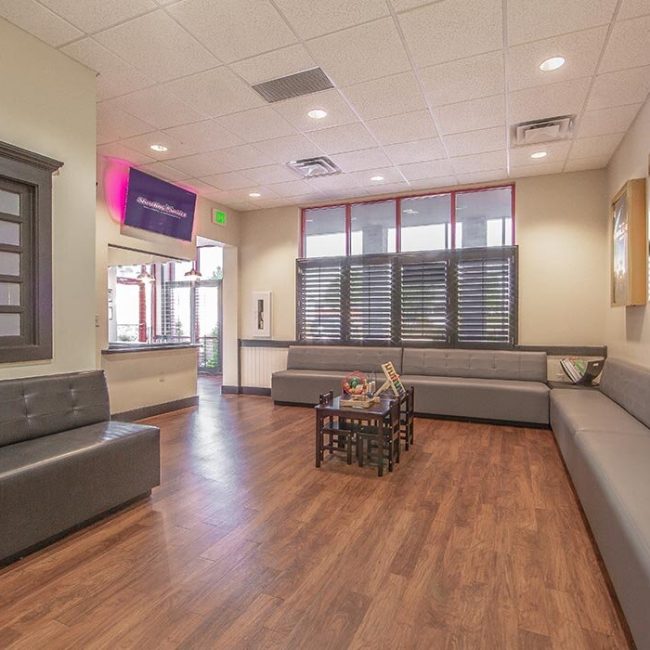Early Prevention
All children should have a check-up with an orthodontist by age 7.
Though most parents associate braces with pre-teens and teenagers, early orthodontic treatment can sometimes be a much more effective method of straightening teeth. The American Association of Orthodontists recommends that children should visit an orthodontist by the age of 7 for an examination, even if it is not yet time for them to start treatment.
By going to the orthodontist by age 7, an orthodontist can check for growth patterns in the teeth and also monitor the development of jaw structure. With better technology and understanding, orthodontists can evaluate any possible problems and provide solutions earlier in order to create more efficient results.
We offer free orthodontic consultations to all of our new patients, so schedule an appointment today!


Signs that Your Child Could Benefit from an Orthodontic Consultation
- Crowding of the teeth
- Overbite, crossbite, or crooked teeth
- Excessive grinding of teeth
- Premature or late loss of primary teeth
- Abnormal growth or misalignment in the jaw
- Facial imbalance
- Protruding teeth
If you notice or see early signs of any of the issues above, you should schedule an appointment at our office. Our orthodontists will be able to conduct a complete exam and review any potential concerns with you.
Benefits of Early Orthodontic Treatment
The advent of orthodontic technology have made treatments more nimble and less invasive. Some of these include the palatal expander, which helps expand the size of the jaw and provide more space for all the teeth to grow in. Early orthodontic treatments allow us to correct problems while the jaw and teeth are still growing. Because of this growth period, the teeth and jaw are better able to grow and shift to the positions that will help correct a smile.
Starting orthodontic treatment early allows for corrections that can greatly expedite orthodontic treatment in the future. By catching problems early, orthodontist can start addressing symptoms that were to grow into bigger problems and may require extensive orthodontic solutions.
It’s important to note that early orthodontic treatment does not mean your child won’t need braces or orthodontic treatment later. Rather, it is a primer that helps make orthodontic treatment in the future faster, less involved, and more effective.
Finally, early orthodontic treatment is not needed for everyone. It is something that is dependent on certain symptoms or conditions that may arise. Therefore, there is no need to elect or push for treatment. Our team will help you navigate whether or not your child could benefit from starting early orthodontic treatment.
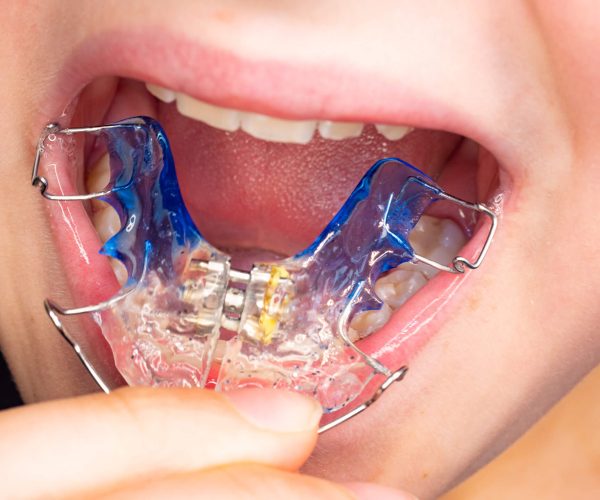
Palatal Expander
Palatal expanders are not worn nearly as long as braces. The typical palatal expanders are typically needed from 3 to 6 months.
Palatal expanders are a great option for children and youth. It helps take advantage of the normal growth that children are going through when they are young, so that when they need orthodontic treatment it will be much easier.
A palatal expander is a custom made device that fits onto the roof of your mouth, helping widen the upper jaw to prevent conditions like crossbites or crowding. Palatal expanders are installed into the roof of your mouth and place gentle pressure so that the teeth widen out.
Palatal expanders are easy to install and do not cause much discomfort or any pain. There is typically less pressure when activating a palatal expander than tightening braces.
Palatal expanders help orthodontists with a number of conditions and aspects of orthodontic treatment. However, these are the most common and well known conditions that a palatal expander can help correct:
Impacted Teeth: When a tooth hasn’t grown in yet, but it is being blocked by the teeth neighboring it, this can cause complications in permanent teeth growing in. A palatal expander can help widen the upper jaw to help make room for the tooth to grow in. Another option that pediatric dentists and orthodontists take is a space maintainer, which is a service we also offer.
Crossbite: When the upper jaw of a child has not grown out, it can have a shape much narrower than the bottom teeth. Due to the discrepancy in width, the upper back teeth may end up biting inside the lower teeth. This can cause problems in development of the jaw and also the straightness of teeth. A palatal expander can help widen out the upper jaw to correct this.
Crowding: Similar to impacted teeth, pediatric dentists and orthodontists can determine if there isn’t enough room for teeth to grow in. In order to look ahead and prevent any crowding, a palatal expander can help widen the jaw and create space to help allow teeth the space they need to grow in.
There’s a number of small subtleties and factors that can create the need for a palatal expander. When deciding if a palatal expander is needed, Dr. Dan will create a dialogue with the family to create the best plan moving forward.
The palatal expander is a little different than that of braces. Where as braces require no maintenance from parents or children on a daily basis, a palatal expander does necessitate some upkeep from parent and child.
Overall, parents will need to activate the palatal expander to help expand the upper jaw. The following steps will walk you through how to activate the palatal expanders.
Step 1: Gather your child and locate the palatal expander in their mouth. Use an external light source to help illuminate the roof of their mouth.
Step 2: You want to locate the expander, which Dr. Dan, will point out to you at the installation of the palatal expander.
Step 3: Place the key provided by Dr. Dan and insert it into the expander.
Step 4: Once the key has been inserted, you will want to turn the key a small amount to expand the palatal expander a small bit. Each palatal expander is custom made, so Dr. Dan will work with you so that you know exactly how much you should be expanding the appliance.
Step 5: After the palatal expander has been expanded, you will then remove the key. It is important when removing the key to make sure you did not jostle or loosen the palatal expander when removing the key.
Overall, the use of palatal expander and the key allows for subtle expansion of the upper jaw and allowing them to widen.
Palatal expanders are not worn nearly as long as braces. The typical palatal expanders are typically needed from 3 to 6 months. Before the palatal expander is removed, Dr. Dan will want to make sure that the widening of the upper jaw can be maintained and that the spacing will not reverse.
Once the palatal expander has achieved the desired spacing, the device will be removed!
Advantages of Expanders:
A palatal expander is a custom made device that fits onto the roof of your mouth, helping widen the upper jaw. Palatal expanders are installed into the roof of your mouth and place gentle pressure so that the teeth widen out.
Palatal expanders are a great option for children and youth with growing smiles! It helps take advantage of the normal growth that children are going through when they are young, so that when they need braces, it will be much easier.
Short wear! Expanders are not worn nearly as long as braces. The typical palatal expanders are typically needed from 3 to 6 months.
No pain here! Expanders are easy to install and do not cause much discomfort or any pain. There is typically less pressure when activating a palatal expander than tightening braces.
Makes braces easier! Expanders can help a variety of orthodontic conditions before you put braces on. This makes your kiddo’s time in braces easier and often shorter! Common conditions treated with expanders include impacted teeth, crossbite, and crowding.
Advantages of Braces:
Orthodontic braces come in many shapes and sizes these days! From traditional metal braces to high-tech, more discreet Damon braces, and even clear braces, we offer it all at Showtime Smiles.
Braces are placed on the teeth and guided by an orthodontist to give you a straight, beautiful smile and a comfortable and stable bite. However, there
are more benefits than what meets the eye!
Boosted Oral Health! When teeth are misaligned, they can be more difficult to brush and floss properly and can become a cavity’s paradise! Getting braces ultimately makes your teeth easier to take care of and can prevent tooth decay.
Self-Esteem! Having a straight smile helps people of all ages to feel more confident. Whether it’s simply choosing to smile more or even speak more
in public, a beautiful straight smile can give your little one the confidence they need.They’re Fixed to the Teeth! Unlike other orthodontic appliances that can be removed, metal braces are affixed to the teeth. Your child won’t be able to remove them, which helps to keep treatment on-time. Just avoid broken brackets and take good care of your teeth, and we’ll have your child out of
braces and showing off their new smile in no time!

Meet Our
Doctor
When you’re at Showtime Smiles, you’re under the care of the best orthodontic team in the McKinney area. Our board certified orthodontist, Dr. Bar, has a certification granted by the American Board of Orthodontics. The distinction comes with years of extra residency, additional education and more hands-on patient care. When you choose a board certified orthodontist, you know that you are choosing someone that the dental industry deems the top of the class!

Our Office
- Mo - Thur: 8AM - 5PM
Hours are subject to change without notice.
Please call the office before coming in

